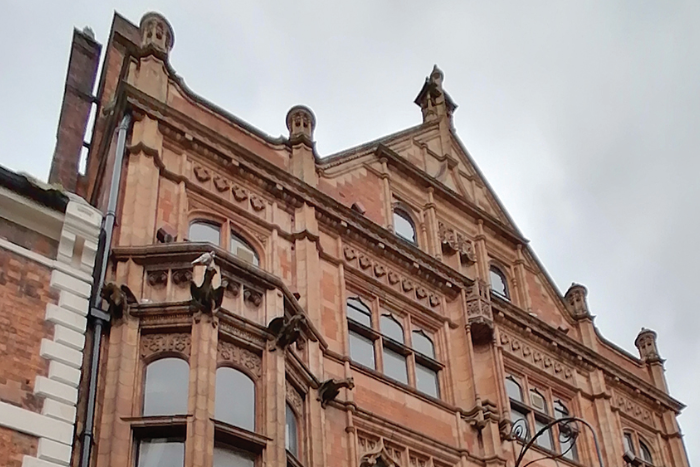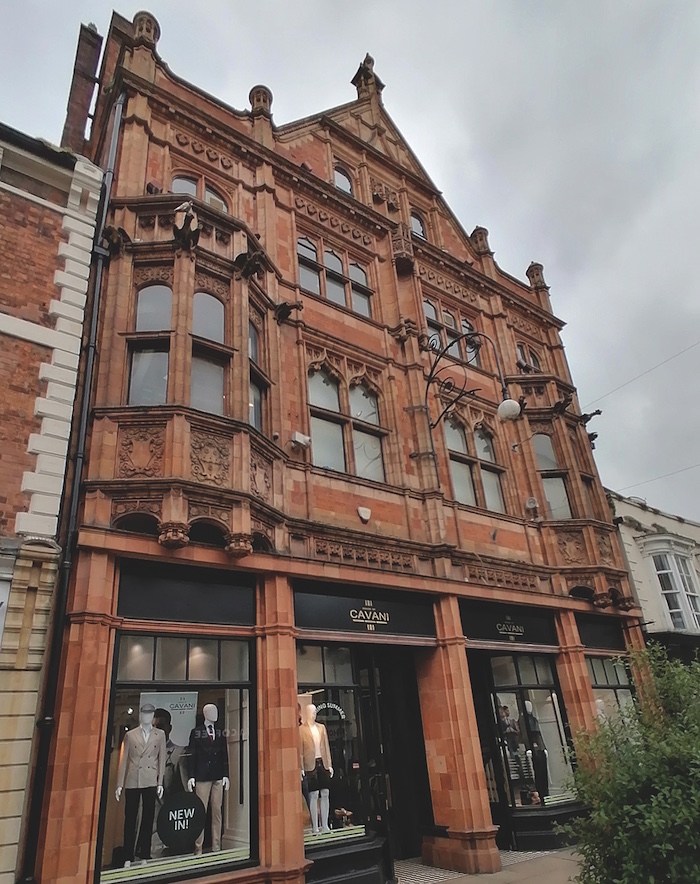
191 High Street - mixing old and new
Andrew Walker of the Survey of Lincoln considers an impressive High Street building, which is now home to the men’s clothing store Cavani.
In recent years, the building has housed a succession of clothes shops. However, between 1960 and 1996 it accommodated the East Midlands Electricity Board Service Centre and its showrooms, latterly known as Powerhouse.
Upon its opening, in addition to its basement and ground-floor sales spaces, on the first floor was a ‘demonstration theatre’, where new domestic technology was put through its paces, and courses for ‘young housewives’ took place. Curiously, one wall of the theatre was covered by a photographic mural of Boothby Graffoe.
From 1938 almost until the opening of the EMEB Service Centre, the building housed a café, firstly run by the YMCA which also operated a hostel there during the war. For most of its first 40 years the building served as a bank.
From its opening in 1897 it accommodated the Sleaford-owned Peacock and Willson Bank until 1912 when it was taken over by Lloyds Bank. This operated there until March 1923. Then, in December 1923, the National Provincial Bank moved in until the later 1930s.
When this striking building was opened on Friday 25 June 1897, in the week of Queen Victoria’s Diamond Jubilee, the High Street had recently seen the arrival of several new plate-glass-fronted stores and some impressive commercial properties.
From 1886, the bankers Smith, Ellison and Company were based in an imposing stone structure near to the Stonebow (now NatWest); and another substantial new bank had been constructed on the High Street, in 1893, on the corner of the High Street and Guildhall Street, the Lincoln and Lindsey Bank (now HSBC). The latter was designed by the Lincoln architects Messrs William Watkins and Son, who were also responsible for the new premises at 191 High Street.
The building is of a distinctive Flemish Gothic style, with terracotta mouldings, supplied by Doulton & Co. of Lambeth. The use of terracotta became a distinctive feature of Watkins’ High Street designs: number 305-6, opened in 1900, and now occupied by FatFace, is another example of his work where this material is used prominently.
The Lincoln Leader described the building positively in January 1897, but noted that its full architectural beauty was diminished by the low-level adjoining buildings, making its ‘upper storeys … quite isolated.’
When the building opened, there were two ground-floor doorways, one being the bank’s main entrance, and the other that to the manager’s house. Still surviving, though, are the ornamental panels under the first-floor oriel windows on which are shields, displaying the arms of the Peacock and Willson families.
The ground-floor banking hall had a decorative ceiling and an ornate fibrous plaster frieze ran around the upper portion of the walls, both supplied by W. H. Horne, of Bradford. The main building contractors, Wadsley and Co. of Horbling, who charged £3900 for their work, whilst excavating the basement, found old masonry fragments, some supposedly of late Norman origin, including a window head.
The building was designed to look medieval, reflecting the aesthetic fashion of the day, and evoking a sense of permanence, a useful characteristic for a bank. There were, though, some modern touches. The building was amongst the first in Lincoln to have electrical wires drawn through iron tubes built into the walls, just prior to the municipal supply becoming available. As an electrical pioneer, it was an appropriate later home for an electricity board showroom.
For more information about The Survey of Lincoln, see www.thesurveyoflincoln.co.uk.

